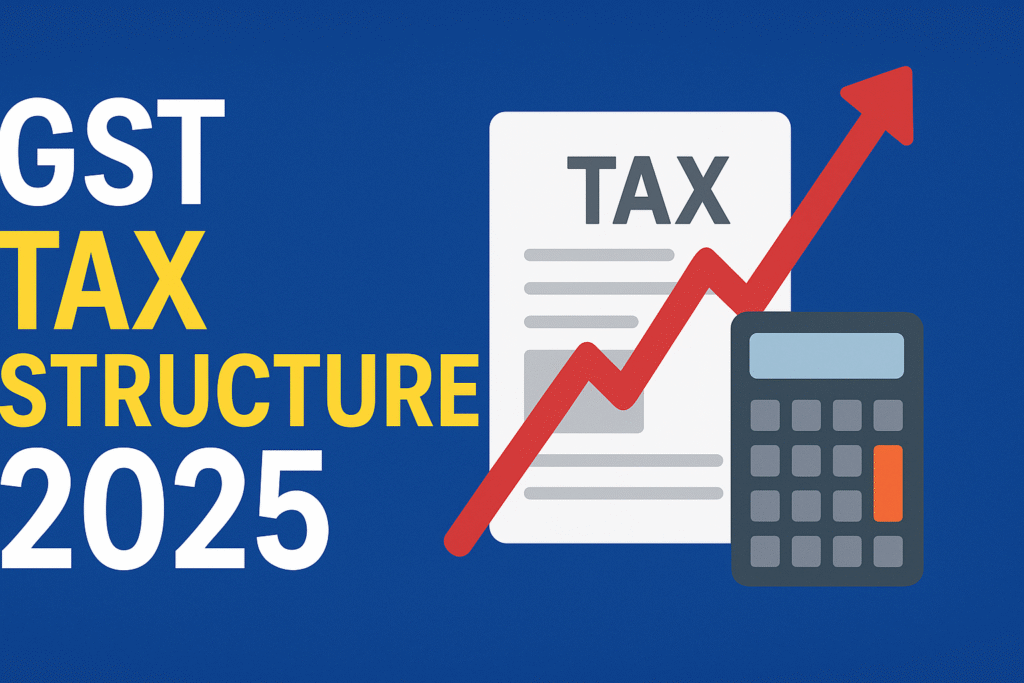GST Tax Structure 2025: A Step Towards Simplification
If you are a business owner, student of finance, or simply a taxpayer in India, you might be wondering: “What will the GST tax structure look like in 2025?” This question is trending across India as the government works on the next generation of GST reforms. Let’s break it down in simple language.
What is Changing in the GST Tax Structure by 2025?
However, multiple slabs (5%, 12%, 18%, and 28%) made it complex. The official GST portal now indicates upcoming reforms in 2025 aimed at simplification:
- Merger of tax slabs into fewer categories
- Introduction of a single GST slab model for most goods
- Wider GST coverage (petroleum, alcohol, and electricity may be included)
- AI-driven digital compliance system

Why GST Reform 2025 is Needed
Businesses, especially MSMEs, often struggle with GST filing and slab confusion. The Economic Times GST reports highlight the key issues:
- Complex multi-slab system leading to disputes
- Heavy compliance burden for small businesses
- Slab classification litigation issues
- Lack of global competitiveness due to complex tax structure
GST 2025 Structure: Slab Merger & Simplification
1. Fewer GST Slabs in 2025
Experts suggest that 5% and 18% may merge into a new 12%–14% GST slab, while luxury goods will continue to attract 28% plus cess.
2. Wider Tax Coverage
Petroleum, alcohol, and electricity may finally be brought under the GST umbrella, ensuring a uniform tax structure.
3. Smarter GST Compliance
- AI-based fraud detection systems
- Simplified input tax credit (ITC) rules
- Automated GST return filing
4. Uniformity Across India
The goal is to truly achieve “One Nation, One Tax” with consistent rules across all states.

Impact of GST Tax Reforms 2025
For Consumers
- Simplified billing with fewer tax rates
- Reduced pricing disputes
- Less time wasted on multiple filings
- Simplified compliance for MSMEs
- Smoother input tax credit claims
- Boost in ease of doing business
- Attraction of foreign investment
- Stable government revenue growth
Expert Insight: Will GST Become a Single Tax Slab in 2025?
While the idea of a single tax slab GST sounds ideal, in reality, India’s diverse economy makes it challenging. Essential goods cannot be taxed at the same rate as luxury cars.
Conclusion
The GST tax structure 2025 is expected to be a major milestone in India’s tax reforms. With slab mergers, digital compliance, and a move towards uniformity, GST 2025 could transform the indirect tax system and bring India closer to its dream of One Nation, One Tax.
✅ Your Turn
What’s your opinion on the upcoming GST reforms?
- Should India move to a single GST slab?
- Or should multiple slabs remain for fairness?
👉 Share your thoughts in the comments!
👉 Also, check out our related blog: Future of Digital Finance in India

